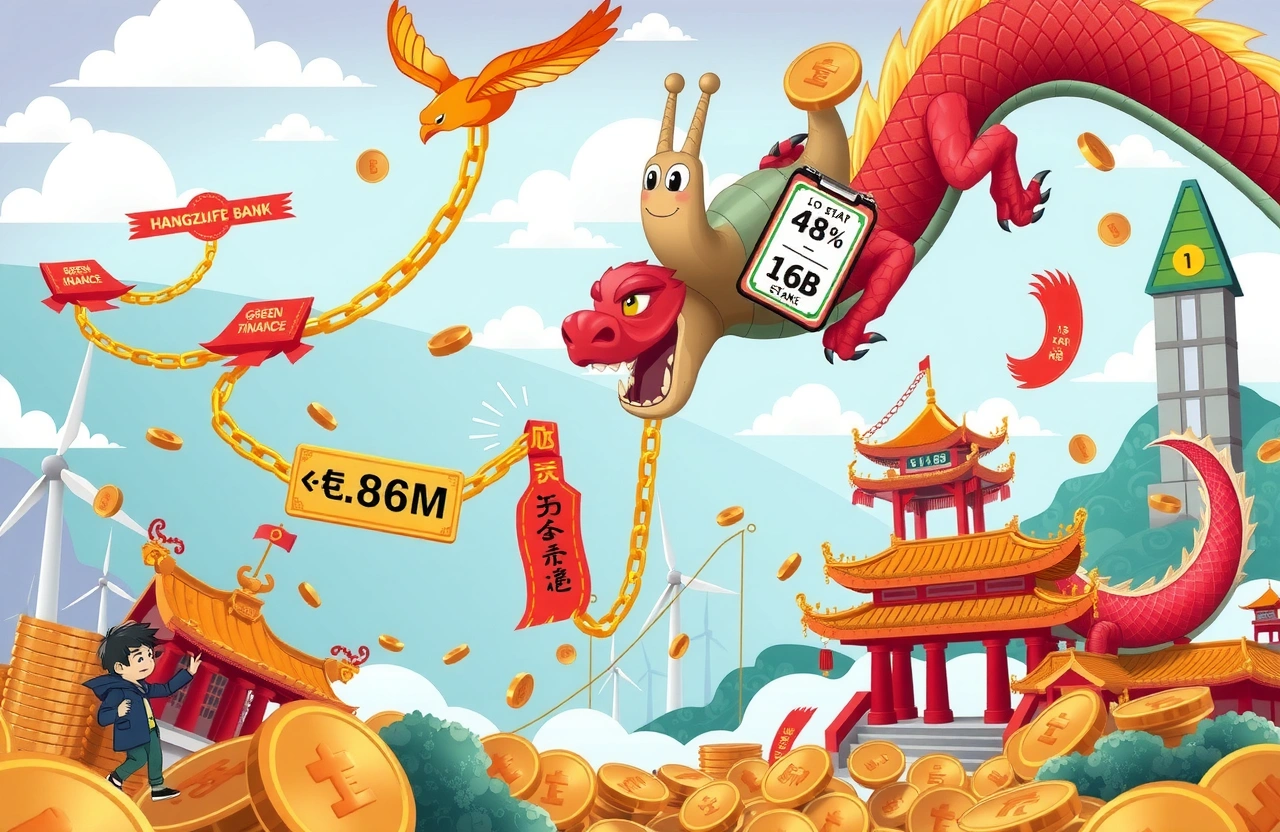The Exit Strategy Unfolds
As Chinese bank stocks rally to multi-year highs, China Life Insurance Company Limited has initiated its fourth and final divestment from Hangzhou Bank. On July 15, 2025, Hangzhou Bank (SHA:600926) disclosed that the insurance giant will sell its entire 0.70% stake—equivalent to 5.08 million shares—worth approximately 860 million yuan ($118 million USD) based on current valuations. This culminates a gradual withdrawal since 2021 that has already recovered 39.02 billion yuan ($5.4 billion) from the financial institution.
Strategic Divestment Timeline
China Life’s phased exit follows a clear pattern:
– November 2024: Sold 1% stake (59.3 million shares) for ¥7.7 billion
– March 2023: Transferred 2% stake to Hangzhou Urban Investment Group for ¥14.29 billion
– Multiple transactions since 2021 extracting ¥8.43 billion
The upcoming three-month divestment window completes China Life’s long-term profit realization strategy amid favorable market conditions.
The Investment Origins
2009: Insurance Coalition Forms
Chinese insurers originally formed an investment consortium during Hangzhou Bank’s 2009 capital expansion:
– China Life Insurance: ¥1.6 billion initial commitment
– Pacific Life Insurance (now CPIC Life)
– China Pacific Insurance
– Ping An Insurance
This coalition collectively held strategic stakes averaging 5-8% to diversify financial sector portfolios.
Windfall Through IPO Transition
Following Hangzhou Bank’s 2016 Shanghai IPO, shares rose 280% from ¥16.94 to ¥17.40 by mid-2025 (post-split adjusted). China Life’s ¥16 billion investment ballooned to peak paper value exceeding ¥48 billion before its divestment campaign.
Shareholder Reshuffle
Insurance Exodus Pattern
— Pacific Life: Completed full exit in August 2022
— China Pacific: Reduced position by 65% since 2021
— Ping An: Maintains 3.2% core holding
China Life’s forthcoming exit marks the largest institutional withdrawal among original insurance backers.
New Strategic Players Emerge
Simultaneously, new institutional capital enters:
• January 2025: New China Life purchases 5.45% (¥43.17 billion) from Commonwealth Bank of Australia
• June 2025: Confirmed 5.09% stake establishes New China as Hangzhou Bank’s fifth-largest shareholder
This institutional rotation reflects portfolio recalibration as bank valuations peak.
Market Implications
Bank Stock Vulnerability Signals
Following China Life’s announcement:
– CSI 300 Banks Index dipped 1.3%
– Hangzhou Bank shares fell 2.8% intraday
– Shanghai Premier Li X?u stressed “financial stability assessments” amid volatility
Analysts interpret insurer exits as profit-taking signals preceding potential sector consolidation. UBS banking analyst Zhang Wei notes: “Such strategic divestments historically precede valuation corrections when occurring across major institutions simultaneously.”
Strategic Capital Allocation
China Life’s recovered capital presents reinvestment opportunities aligning with China’s economic priorities:
• Green finance initiatives
• Technology infrastructure funds
• Belt and Road project financing
• Pension product expansion
This strategic divestment enables portfolio modernization beyond traditional banking exposure while capturing 15-year investment gains.
Sector-Wide Insurance Capital Rotation
The Hangzhou Bank exit showcases broader insurance capital migration:
– $28 billion shifted from financials to renewables since 2023 (CIRC data)
– Insurance-financial holdings dropped to 11.3% from 15.9% in five years
Industry leaders describe this as “return harvesting” post-pandemic. China Life CEO Wang Bin underscored this strategy in May 2025: “We continually optimize asset allocation based on macroeconomic cycles rather than sentimental attachments.”
Investor Takeaways
• Monitor Hangzhou Bank short-term liquidity as China Life unwinds positions
• Evaluate New China Life’s strategic objectives as new anchor investor
• Track insurance capital flows toward sovereign-backed infrastructure projects
• Anticipate increased banking sector volatility during institutional rebalancing
China Life’s comprehensive strategic divestment signals prudent capital stewardship amid shifting financial landscapes.



